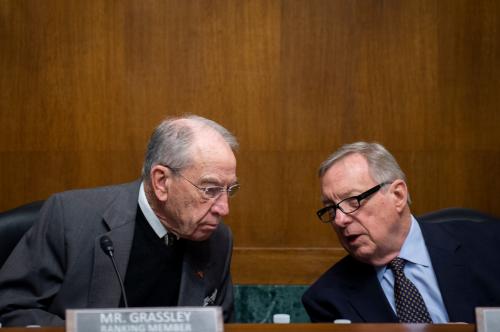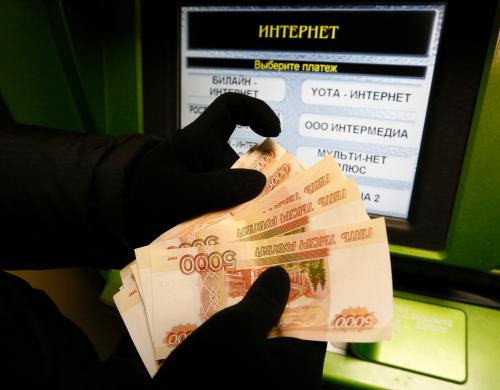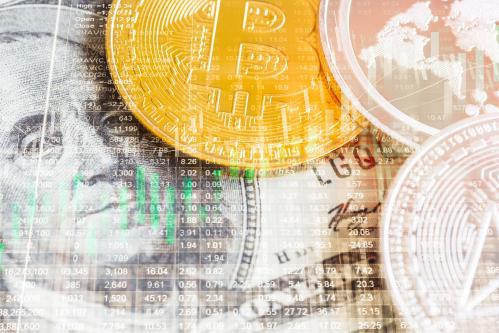The Superbowl is America’s most-watched television event of the year and this year the sector with the most advertising was crypto. The crypto ecosystem of digital money (e.g., Bitcoin), nonfungible tokens (NFTs), digital wallets, and trading platforms have appeared throughout popular culture from a skit on the late-night comedy show Saturday Night Live to a segment of the Simpsons, currently America’s longest-running prime-time TV show. The rise in popularity and growth in ownership of these digital assets has also caught the White House’s attention with the release of President Biden’s new executive order, “Ensuring Responsible Development of Digital Assets.”
The executive order should be thought of more as a call to action than as a specific game plan. The order lays out a series of non-controversial policy statements, such as “we must protect consumers, investors, and businesses in the United States” and “we must support technological advances that promote responsible development and use of digital assets.” Broadly speaking, the White House is seeking to strike the right balance from the positives of crypto—financial efficiency, inclusion, American leadership in global finance—with its negatives: potential illicit financing, consumer and business abuse, and regulatory arbitrage. The executive order further requires a set of reports coordinated through the interagency process from a wide range of executive branch stakeholders.
Historically, financial regulation is largely in the hands of agencies with substantial structural independence from the White House. The order respects regulatory independence while making clear to the Federal Reserve (Fed) what the White House wants. Specifically, the Fed “is encouraged to continue research and report” on its work to potentially create a central bank digital currency (CBDC). The Fed just released two reports on a CBDC, which arguably already satisfy the executive order’s request. The Fed’s report hoped for legislation proposing a CBDC but absent that reserved their authority to issue one “in the context of broad public and cross-governmental support.” What exactly qualifies as support is not defined by the Fed, but this executive order could well fit the bill, particularly the language in Section 4(c) which encourages the Fed to study “the optimal form of a United States CBDC, and to develop a strategic plan for the Federal Reserve and broader United States Government action, as appropriate, that evaluates the necessary steps and requirements for the potential implementation and launch of a United States CBDC.” Not quite hitting ignition to launch, but certainly a sign toward go.
On the question of legal authority to issue a CBDC, the White House has tasked the Attorney General (AG) to provide to the President a legal assessment of whether legislative authority already exists or whether new legal authority is needed. The AG is required to consult with Treasury and Fed on this assessment and, if needed, present a corresponding legislative proposal through the White House’s National Economic Council (NEC) and National Security Advisor (NSA) channels. The administrative process detailed in the text may seem technical, but setting the process for action is one of the most powerful tools used in the order. AG Garland now has the pen in both deciding whether new legislation is needed to launch a CBDC and if so, what that legislative proposal should look like. The Department of Treasury and the Fed have input and the NEC and National Security Advisor’s office will deliver the finding.
Moving beyond CBDC back into digital assets, the order assigns the Treasury Department the pen on a report on policy recommendations throughout the rest of the financial regulatory world. The various independent financial regulators and the Federal Trade Commission are given a consultative role along with the Department of Labor (as retirement accounts are still regulated through the Department of Labor). Each financial regulator is also “encouraged to consider the extent to which investor and market protection measures within their respective jurisdictions may be used to address the risks of digital assets and whether additional measures may be needed.” Finally, the Financial Stability Oversight Committee (FSOC, or the Jedi council of financial regulators as I think of them) is required to produce a report “outlining the specific financial stability risks and regulatory gaps prosed by various types of digital assets,” along with recommendations to solve these potential problems. The executive order wants the FSOC to build on earlier work a subset of these regulators working in a different group (the President’s Working Group on Financial Markets) conducted specifically on stablecoins. That report recommended stablecoin regulation be concentrated at the Federal Reserve both for coin issuers and for digital wallets.
Biden’s executive order also devotes substantial resources and attention to the national security issues posed by digital assets, including issues of money laundering and sanctions evasion. Clearly, Russia’s invasion of Ukraine elevated the importance of national security in the White House’s executive order on crypto. Note that the third objective listed (2(c)) is to “mitigate the illicit finance and national security risk posed by misuse of digital assets.” Further, when defining future coordination in the White House, the Assistant to the President for National Security Affairs is listed jointly with the Assistant to the President for Economic Policy. Likewise, the statement from the White House accompanying the order is jointly written by NEC Director Deese and NSA Advisor Sullivan.
To what degree the executive order was modified to enhance national security objectives and engagement as a result of Russia’s recent action is not known. However, as the various agencies involved engage in the substance of the order, they are forced to consider national security, foreign policy, and international sanctions ramifications of crypto and digital assets at a much higher level. Those who have concerns about crypto’s role in this space will have stronger bureaucratic and policy grounds to voice those positions within and throughout the interagency process. To the extent that policy debates involve trade-offs between economic efficiency, competitiveness, financial inclusion against American control of the global payment system for national interest, the latter side has added weight as a result of the war in Europe.
In conclusion, the executive order lays out a road map for the Administration’s future actions. It appears to give further impetus behind the Federal Reserve’s recent work on a CBDC. The order empowers the AG to come to a decision on the existing legal authority for the Fed to issue a CBDC, which is worth watching. The order balances the potential benefits from digital assets with a litany of concerns and risks. The current situation in Ukraine likely had an impact on how those risks are considered, elevating the importance of national security and foreign policy concerns in the evolution of the global payment system.
The dollar is the currency of the world. The White House clearly wants that to remain the case as the world digitizes and new forms of digital assets challenge government-sponsored currency. Let’s hope that the various stakeholders can work collaboratively and correctly to get this emerging digital system right.







Commentary
How Biden’s executive order on cryptocurrency may impact the fate of digital currency and assets
March 17, 2022